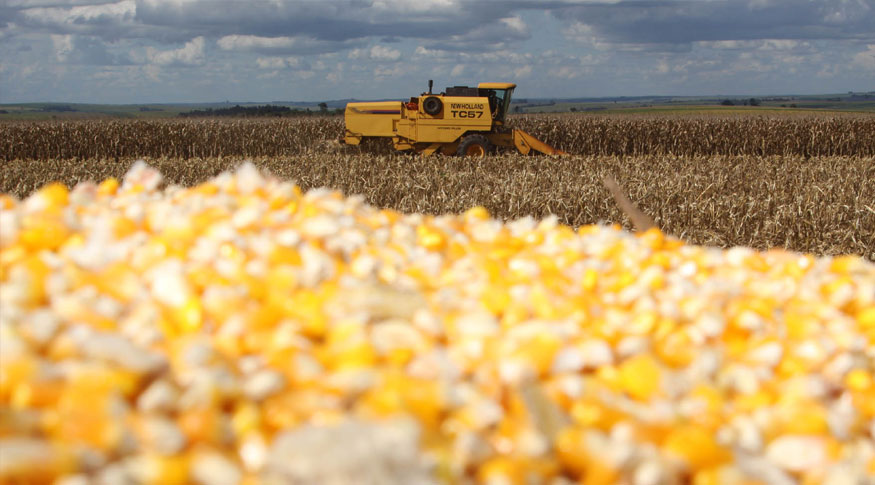Agricultural production
July´s estimate grows 0.5%, expects record harvest of 308.9 million tonnes in 2023
August 10, 2023 09h00 AM | Last Updated: August 10, 2023 11h53 AM

According to the July estimates of the Systematic Survey of Agricultural Production, released today (10) by the IBGE, the national harvest of cereals, legumes and oilseeds should reach 308.9 million tonnes in 2023. The record harvest means more 45.7 million tonnes (17.4%) than that obtained in 2022, when it added up to 263.2 million tonnes. It increased 1.6 million tonnes (0.5%) in relation to the estimate accomplished in June.
The area to be harvested was of 777.1 million hectares, representing an increase of 5.2% (3.8 million hectares) over the area harvested in 2022. It increased 0.2% (118.9 thousand hectares) in relation to the June´s projection.
Carlos Barradas, manager of the survey, states that some products stand out in the increase of 0.5% in the July´s estimate over that in the previous month. Broadly speaking, few climate mishaps in Brazil help to explain the expectation for a record harvest. “Except for Rio Grande do Sul, which has faced severe drought once more, crops in the other Federation Units were in good output conditions,” highlights him. However, the researcher reminds that, even in Rio Grande do Sul, the weather problems were not serious as in 2022.
Among the products, upland cottonseed stood out with an estimate of 7.4 million tonnes, a record figure that represents an increase of 7.2% in relation to the previous estimate. Compared with 2022, it is expected a growth of 10.2%, due to the expansion of 5.6% in the cropped area. “This expansion is due to good prices, as well as to a favorable weather, mainly in the second crop, when most of the culture is cropped, leveraging the growth in the output of the crops,” explains Barradas. Another product is wheat, whose output should reach 10.8 million tonnes, an increase of 1.2% over June and of 7.1% over the 2022 harvest, being a record as well.
Forecast for corn and soybeans increase compared with June
The second crop of corn added up to 97.1 million tonnes, an increase of 0.8% (or 767.5 thousand tonnes). “The favorable weather for the second crop explains this increase,” states the researcher. The highest increases in the output were reported by Bahia (43.1% or 224.4 thousand tonnes) and Mato Grosso (1.5% or 707.4 thousand tonnes).
In the case of soybeans, the LSPA expects 148.8 million tonnes, an increase of 0.3% (388.2 thousand tonnes) compared with the previous estimate. “Recovery of crop productivity in most of the country, against the average reached in 2022, was the main factor accounting for the increase in output,” explains Barradas, reminding the exception in Rio Grande do Sul, which suffered a strong drought for one more year. The increase in the output in relation to the previous month is mainly due to Piauí, which grew 4% or 131.9 thousand tonnes, and to Bahia, which rose 7.1% or 502.4 thousand tonnes. “They are two Federation Units that plant soybeans later, then they harvest it later, helping to expand the estimate,” justifies the researcher.
Rice, corn and soybeans are the three major products of the survey. Together, they represent 92% of the production estimate and account for 87.1% of the area to be harvested.
With a share of 31%, Mato Grosso leads national output of grains
Mato Grosso remains leading the national production of grains with a share of 31%, followed by Paraná (15%), Rio Grande do Sul (9.5%), Goiás (9.5%), Mato Grosso do Sul (8.9%) and Minas Gerais (5.9%). These states together accounted for 79.8% of the total. In the division among regions, the Central-West has virtually half of the production (49.7%), followed by the South, with more than a quarter (26.9%). The Southeast (9.5%), Northeast (8.8%) and North (5.1%) complete the list.
Concerning the output, the major increases in the July estimates over June occurred in Bahia (1.2 million tonnes), Mato Grosso (751.0 thousand), Minas Gerais (23.5 thousand), Alagoas (20.1 thousand), Acre (2.6 thousand) and Maranhão (2.1 thousand). On the other hand, Paraná (less 106.9 thousand), Piauí (less 93.9 thousand), Rio Grande do Sul (less 90.0 thousand) and Ceará (less 53.2 thousand) dropped.
About the LSPA
Launched in November 1972 aiming at addressing the demand of users for monthly short-term statistical information, the LSPA provides estimates of planted area, harvested area, amount produced and average yield of products selected based on criteria of economic and social importance for Brazil. It not only follows up each crop investigated in the calendar year of reference, from the intention to plant up to the end of the harvest, yet also the forecast of the harvest in the coming year, for which the months of October, November and December are surveyed. Please access the data on Sidra. The next release of the LSPA will be on September 6.



















